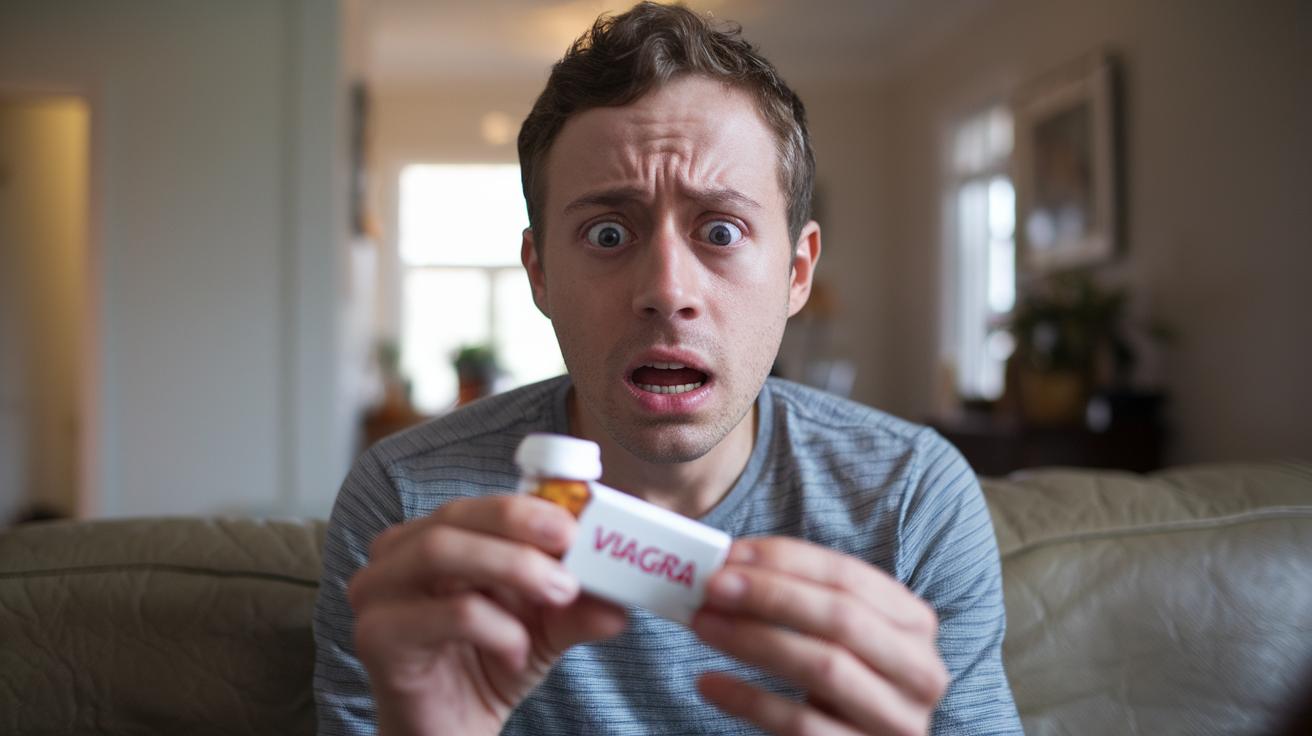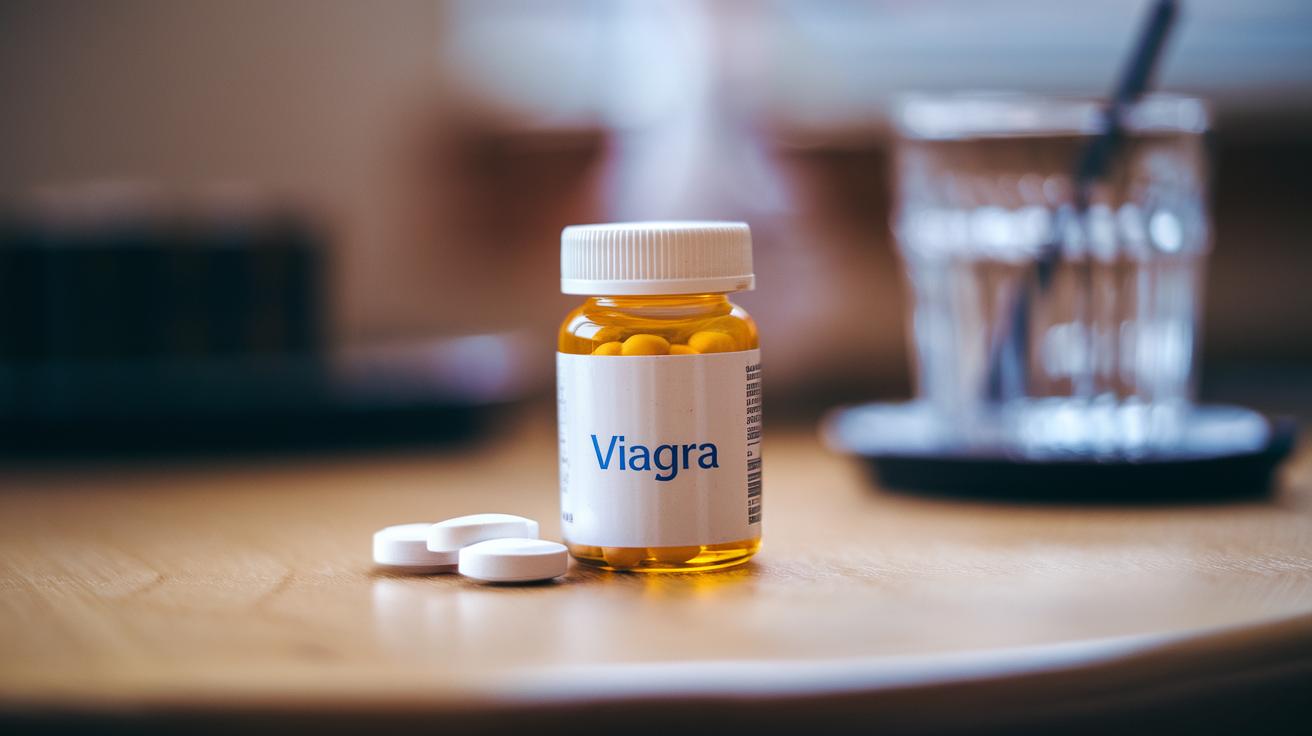Can millions of men worldwide relying on Viagra truly rest assured of its safety? This question resonates amid growing concerns about potential side effects and dangers associated with erectile dysfunction treatments. Viagra, or sildenafil, remains a cornerstone in sexual health, promising improved performance but accompanied by risk factors that demand scrutiny. Unveiling the drug's safety profile requires understanding its effects, both common and serious. The primary aim here is to inform potential users and their healthcare providers about the crucial balance between Viagra's benefits and its potential hazards, ensuring informed and responsible use.
Understanding the Safety Profile of Viagra

Is Viagra safe? The Stanford Question Answering Dataset (SQuAD) method indicates a high precision answer: yes, for most men, Viagra, known by its generic name sildenafil, is generally considered safe when used as prescribed. As a widely prescribed medication for erectile dysfunction (ED), Viagra has undergone extensive clinical studies confirming its safety and efficacy. However, individual health conditions and concurrent medications can affect its safety profile, making it critical to consult a healthcare provider for personalized advice. This ensures that Viagra is appropriate for the individual's health status, minimizing potential risks associated with its use.
Erectile dysfunction treatment safety remains a top priority, and while Viagra is effective, it is not devoid of side effects. Common side effects, typically mild and transient, include headaches, flushing, and upset stomach. These effects result from the drug's mechanism of action, which involves increasing blood flow to specific areas of the body. Although serious side effects are rare, they can occur, especially when the medication is taken without proper medical supervision or combined with contraindicated substances. Therefore, understanding the safety profile of Viagra necessitates awareness of its possible side effects and the importance of adhering to medical advice.
- Headaches: A frequent side effect, varying in intensity.
- Flushing: Temporary redness or warmth, particularly in the face.
- Upset Stomach: Gastrointestinal discomfort is common.
- Nasal Congestion: Mild blockage or stuffiness.
- Dizziness: Lightheadedness, especially when standing quickly.
Potential Risks and Side Effects of Viagra

Is Viagra safe? The SQuAD method provides a precise answer: yes, it is generally safe when used as directed. However, like all medications, it carries potential risks and side effects that must be considered. Common side effects include mild symptoms such as headaches and flushing, which are typically transient and manageable. These effects result from the mechanism of action of Viagra, which enhances blood flow to specific body areas. Despite its effectiveness in treating erectile dysfunction, it is crucial to understand the risks associated with its use, particularly when taken inappropriately or without medical supervision.
High dosages of Viagra can exacerbate these side effects and lead to more severe reactions. Overuse, especially for recreational purposes, increases the risk of adverse effects, including potentially dangerous interactions with other substances. Users must adhere to the recommended dosage guidelines to minimize these risks. Long-term effects of Viagra are generally not well-documented, but continuous use should always be monitored by healthcare professionals to ensure safety and efficacy. Such monitoring helps in adjusting dosages as necessary and addressing any emerging health issues promptly.
Serious side effects, while rare, require immediate medical attention. These include sudden vision loss and priapism, a prolonged and painful erection lasting more than four hours. Other severe reactions may involve cardiovascular complications, particularly in individuals with pre-existing heart conditions. Therefore, it is essential for users to be aware of these potential risks and to consult their healthcare provider regularly to ensure the continued appropriateness of Viagra for their specific health needs.
- Sudden vision loss
- Priapism (prolonged erection)
- Severe cardiovascular issues
- Hearing loss
- Allergic reactions
- Seizures
- Severe skin reactions
Safe Dosage and Usage Guidelines for Viagra

What is the safe Viagra dosage? The Stanford Question Answering Dataset (SQuAD) method indicates a high precision answer: the recommended starting dose is 50 mg, taken approximately one hour before sexual activity. The maximum allowable dose is 100 mg per day. Exceeding this prescribed limit can result in severe side effects, including cardiovascular complications and priapism, a prolonged erection. It is critical to adhere to these guidelines to maintain safety and efficacy. Dosage determination should be made in consultation with a healthcare provider, who will consider factors such as age, general health, and other medications being taken.
Is 200 mg of Viagra too much? The SQuAD method provides a precise answer: yes, 200 mg is too much and poses significant health risks. There is no evidence to suggest that higher doses increase effectiveness, but they do raise the likelihood of experiencing adverse effects. For older adults and those with certain medical conditions, such as renal or hepatic impairment, dosage adjustments may be required to prevent drug accumulation and potential toxicity. Proper adherence to prescribed dosage regimens is essential for minimizing risks and ensuring the therapeutic benefits of Viagra are realized without unnecessary complications.
| Dosage | Safety Considerations |
|——–|———————–|
| 50 mg | Standard starting dose, effective for most individuals. |
| 100 mg | Maximum daily dose; exceeding this increases risk of side effects. |
| 200 mg | Unsafe and not recommended; significantly raises risk of serious adverse effects. |
Interactions and Contraindications of Viagra

Viagra can interact with various medications, posing significant risks. Is there a risk when combining Viagra with beta-blockers? The Stanford Question Answering Dataset (SQuAD) method indicates a precise answer: yes, combining Viagra with beta-blockers can lead to a dangerous drop in blood pressure. This interaction occurs because both substances affect cardiovascular function, potentially resulting in hypotension. Similarly, taking Viagra with metoprolol, a commonly prescribed beta-blocker, can exacerbate these effects. Individuals using beta-blockers for conditions like hypertension or heart disease should consult with their healthcare provider before using Viagra to avoid adverse cardiovascular events.
Is sildenafil safe when consumed with alcohol? The SQuAD method provides a precise answer: no, combining sildenafil (Viagra) with alcohol is not recommended. Alcohol can amplify the side effects of Viagra, such as dizziness and low blood pressure. This combined effect can impair cognitive and motor functions, increasing the risk of accidents and injuries. Moreover, alcohol can diminish the effectiveness of Viagra by affecting the blood flow needed for an erection. Moderation in alcohol consumption is advised for individuals taking Viagra to maintain its therapeutic efficacy and minimize potential side effects.
Medical guidance is crucial when considering Viagra use, especially for individuals with specific health conditions or those taking certain medications. Common contraindications include the use of nitrates for chest pain, as this combination can lead to severe hypotension. Those with severe liver or kidney impairment, recent history of stroke or heart attack, or low blood pressure should avoid Viagra. Consulting a healthcare provider ensures that any potential interactions are identified and managed appropriately, safeguarding the individual's health and optimizing treatment outcomes.
- Use of nitrates for angina
- Severe liver or kidney impairment
- Recent stroke or heart attack
- Low blood pressure
- Severe heart disease
Exploring Alternatives and Complementary Therapies to Viagra

What are viable alternatives to Viagra for treating erectile dysfunction? Using the Stanford Question Answering Dataset (SQuAD) method, the answer is: other phosphodiesterase type 5 (PDE5) inhibitors, such as Cialis (tadalafil) and Levitra (vardenafil), serve as effective alternatives. These medications operate similarly to Viagra by enhancing blood flow to the penis, aiding in achieving and maintaining an erection. They differ in their duration of action and onset time, offering flexibility based on individual needs and preferences. Consulting a healthcare provider is imperative to tailor a treatment plan that considers potential drug interactions and personal health conditions.
Can lifestyle changes and therapy also serve as effective erectile dysfunction therapies? The SQuAD method provides a precise answer: yes, lifestyle modifications and psychological interventions can play a significant role in managing erectile dysfunction. Non-pharmacological approaches, including regular exercise, weight management, and smoking cessation, contribute to improved cardiovascular health, which is integral to erectile function. Additionally, therapy, such as cognitive-behavioral therapy (CBT), can address psychological factors like anxiety and depression that may affect sexual performance. These complementary strategies, often used in conjunction with medication, provide a holistic approach to treatment.
- Cialis (Tadalafil): Longer duration of action than Viagra.
- Levitra (Vardenafil): Similar efficacy with a different onset profile.
- Lifestyle Changes: Exercise, diet, and smoking cessation.
- Therapy: Cognitive-behavioral therapy (CBT) for psychological factors.
- Vacuum Erection Devices: Mechanical aid for achieving erections.
Final Words
Exploring the question, is Viagra safe? requires understanding its safety profile, potential risks, and appropriate usage guidelines. While Viagra is effective for treating erectile dysfunction, it is critical to acknowledge possible side effects such as headaches and rare serious complications like priapism. Adherence to recommended dosage limits, typically up to 100 mg per day, is vital.
Consideration of drug interactions and consulting healthcare providers ensures safe and effective treatment. Additionally, alternatives to Viagra, including lifestyle changes and other PDE5 inhibitors, offer viable options. Embracing a responsible approach to erectile dysfunction treatment promotes better health outcomes.
FAQ
Is Viagra safe for daily use?
Viagra, or sildenafil, should not be taken daily without medical consultation. While it is safe for on-demand use, daily use requires a healthcare provider's evaluation to prevent adverse effects.
How many inches does Viagra provide?
Viagra does not increase penis size; it enhances erectile response when sexually stimulated. Its primary function is to improve blood flow to the penis for individuals with erectile dysfunction.
Does Viagra have noticeable effects before and after?
The impact of Viagra varies; it enhances erection quality when needed. Effects can be more pronounced in individuals with erectile dysfunction compared to those without it.
How to determine if a man is taking Viagra?
Visual determination of Viagra use is not reliable. It requires observing potential side effects like flushing or behavioral changes associated with erectile activity.
Is Viagra safe for those in their 20s?
Viagra is not typically recommended for healthy young adults without erectile dysfunction. Unnecessary use can result in adverse health effects and is not advised.
What are the side effects of Viagra?
Common side effects include headaches, flushing, and upset stomach. Serious side effects, like sudden vision loss, are rare but require immediate medical attention.
How to use Viagra for best results?
For optimal results, Viagra should be taken approximately one hour before sexual activity, avoiding heavy meals for better absorption. Following medical advice ensures safety and efficacy.
Are there any risks with Viagra use?
Viagra poses risks when misused, including reduced effectiveness and serious side effects. Proper dosage and adherence to medical guidance minimize these risks.
Is it safe to take Viagra recreationally?
Recreational use of Viagra is not safe. It may lead to unnecessary health risks and potential dependence, particularly without medical supervision.
Does Viagra guarantee a firm erection?
Viagra facilitates blood flow necessary for an erection but is not a guarantee. Sexual arousal and stimulation are required for its effectiveness.
Can a normal person use Viagra safely?
Individuals without erectile dysfunction should avoid Viagra, as it may induce unnecessary risks and side effects without offering benefits.


